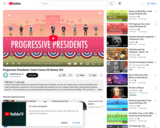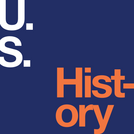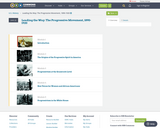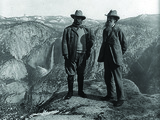
In which John Green teaches you about the Progressive Presidents, who are not a super-group of former presidents who create complicated, symphonic, rock soundscapes that transport you into a fantasy fugue state. Although that would be awesome. The presidents most associated with the Progressive Era are Theodore Roosevelt, William Taft, and Woodrow Wilson. During the times these guys held office, trusts were busted, national parks were founded, social programs were enacted, and tariffs were lowered. It wasn't all positive though, as their collective tenure also saw Latin America invaded A LOT, a split in the Republican party that resulted in a Bull Moose, all kinds of other international intervention, and the end of the Progressive Era saw the United States involved in World War. If all this isn't enough to entice, I will point out that two people get shot in this video. Violence sells, they say.
Chapters:
Introduction: Progressive Presidents
Nationalization
Theodore "Teddy" Roosevelt
Square Deal
National Parks
William Howard Taft
The 16th and 18th Amendments
The Election of 1912
New Freedom vs New Nationalism
The Bull Moose Party
Woodrow Wilson's Election
Mystery Document
Woodrow Wilson's Policies
Progressivism & International Affairs
The Panama Canal
The Roosevelt Corollary
Taft's Dollar Diplomacy
Wilson's Foreign Policy
Roosevelt, Taft, and Wilson's Legacies
Credits
- Subject:
- History
- U.S. History
- Material Type:
- Lecture
- Provider:
- Complexly
- Provider Set:
- Crash Course US History
- Date Added:
- 09/26/2013


